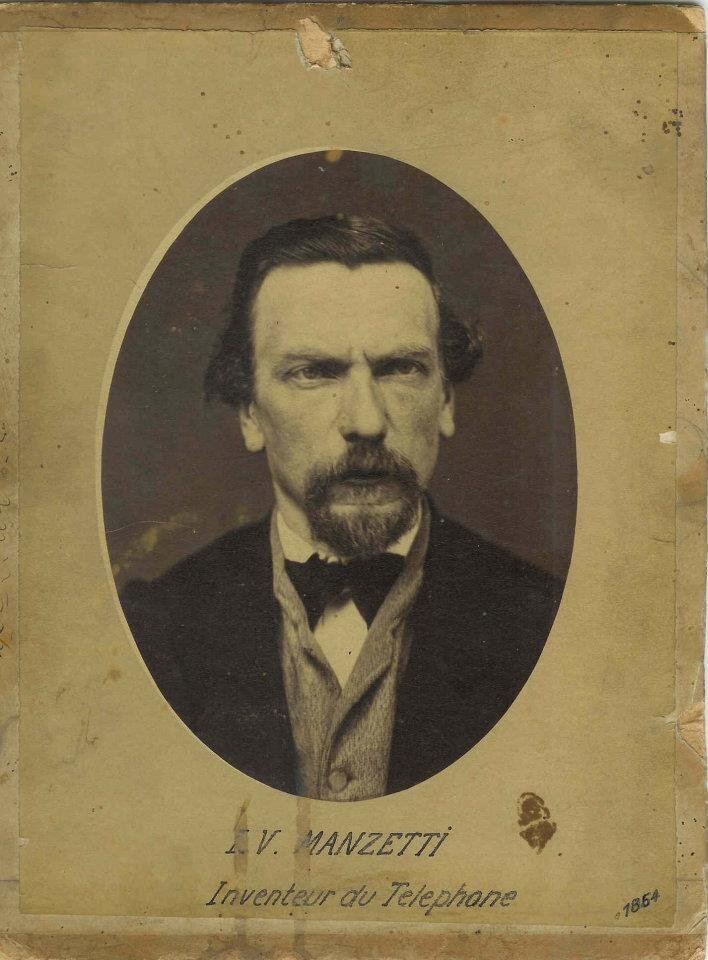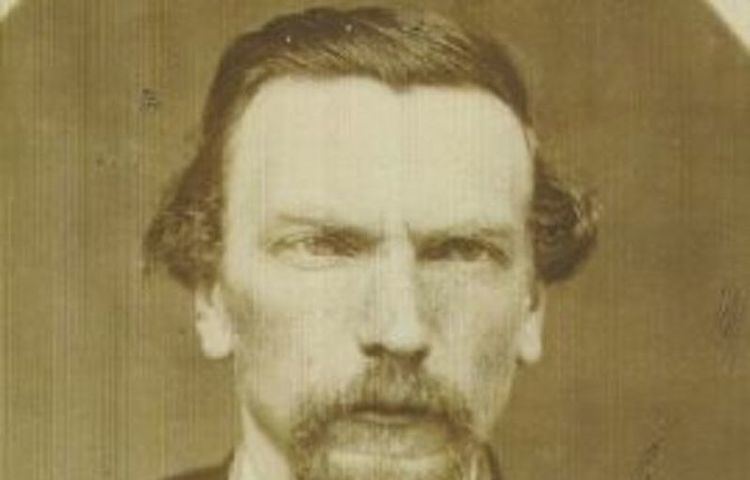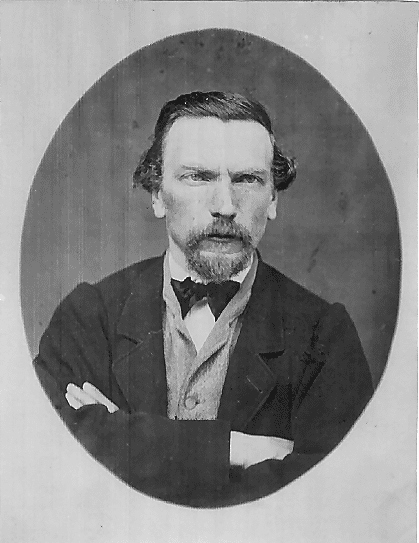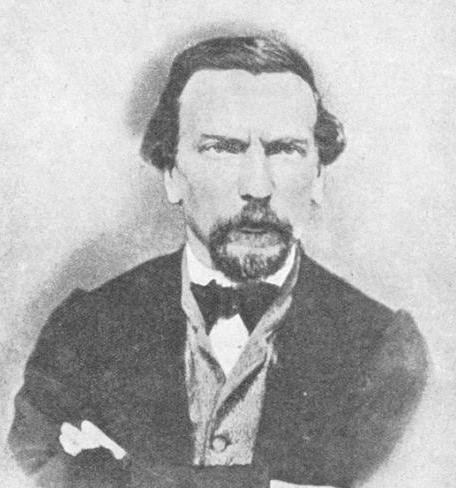Name Innocenzo Manzetti | Role Inventor | |
 | ||
Died March 15, 1877, Aosta, Italy | ||
Wario hates innocenzo manzetti
Innocenzo Vincenzo Bartolomeo Luigi Carlo Manzetti ([innoˈtʃɛntso manˈdzetti]; 17 March 1826 – 15 March 1877) was an Italian inventor born in Aosta. Following his primary school studies he went to the Jesuit-run Saint Bénin Boarding School and then on to Turin where he was awarded a diploma in land surveying before returning to Aosta.
Contents
- Wario hates innocenzo manzetti
- Innocenzo Manzetti la prima telefonata in Valle dAosta
- Automaton
- Hydraulics
- Steam car
- Speaking telegraph telephone
- Miscellaneous inventions
- Family
- References

Innocenzo Manzetti: la prima telefonata in Valle d'Aosta
Automaton

In 1840 he constructed a flute-playing automaton, in the shape of a man, life-size, seated on a chair. Hidden inside the chair were levers, connecting rods and compressed air tubes, which made the automaton's lips and fingers move on the flute according to a program recorded on a cylinder similar to those used in player pianos. The automaton was powered by clockwork and could perform 12 different arias. As part of the performance it would rise from the chair, bow its head, and roll its eyes.

Later he managed to get his automaton to play any piece performed by a musician on an organ by muting the organ's keys and connecting them to the automaton's fingers. A complex automaton was described in the same 1865 news article that described Manzetti's telephone. He also built, as a toy for his daughter, a wooden flying parrot which would beat its wings then, reportedly, rise into the air and hover for two or three minutes before settling on a shelf.
Hydraulics

In 1855 Manzetti invented a hydraulic machine to empty water from the wells of the Ollomont Mines, which were previously unworkable.
Steam car
In 1864 he built a steam-powered car, some 27 years before that built in Paris by Léon Serpollet. He also built the first Zamboni from that technology
Speaking telegraph (telephone)
In 1843 Manzetti first mooted the idea of a "speaking telegraph", or telephone, but didn't pursue the idea at the time. In 1864, to give his automaton the power of speech, Manzetti is reported to have invented his speaking telegraph –some reports state that he didn't actually get it working until the following year. Although he did not patent his device it was reported in Paris, and likely in the press around the world.
On 22 November 1865 a description of a telephone device attributed to Manzetti appeared in the Parisian newspaper, Le Petit Journal, extracted from a similar article in the Sardinia Courier ("Il Corriere di Sardegna"). The article very briefly wrote of an electrical telephone that could reproduce music and loudly spoken vowels with good quality, but could only produce softly spoken speech confusingly. The article's author wrote:
"Manzetti transmits directly the word by means of the ordinary telegraphic wire, with an apparatus simpler than the one which is now used for dispatches. Now, two merchants will be able to discuss their business instantly from London to Calcutta, announce each other speculations, propose them, conclude them. Many experiments have been made already. They were successful enough to establish the practical possibility of this discovery. Music can already be perfectly transmitted; as for the words, the sonorous ones are heard distinctly."
Earlier, on 22 August 1865, La Feuille d'Aoste had reported:
"It was also rumoured that English technicians to whom Manzetti illustrated his method for transmitting spoken words on the telegraph wire intended to apply the invention on several private telegraph lines in England."
Suggestions of the alleged intellectual property theft appear unsubstantiated, as there were no historical records of English technicians or companies implementing 'speaking telegraphs' in the U.K., or elsewhere, in that time period. The United Kingdom did not see its first telephone demonstrations until A.G. Bell demonstrated one of his early devices to Queen Victoria and others in 1877. Well documented sources record that Bell first conceptualized and invented electrical telephony in Canada in July 1874, and did not actually build a working model until March 1876, thus mooting the suggestion of the invention's theft from Manzetti by Bell or others although contacts between Bell and Meucci prior to Bell's patent filings are confirmed.
Miscellaneous inventions
Other machines invented by Manzetti included:
Family
Manzetti married Rosa Sofia Anzola in 1864. His first daughter, Maria Sofia, died in 1867 at the age of two. Manzetti himself died in Aosta on his 51st birthday, poor and largely unrecognized, one year after the death of his second and last daughter, Marina Fortunata.
His brother's grand-grandson, Sergio Manzetti, much later (2001) published the "Manzetti Mechanism", that describes the hydrolysis of polypeptides from a group of enzymes called metalloproteases and a novel method to use molecular strings of aromatic and anti-aromatic chemistry as conductive carbon-based nanowires for electronic signalling devices. Also, Manzetti published an extraordinary theory that uses certain components from quantum physics to study the dynamics of low-pressure systems. He also published a tentative approximation of exploiting universal non-additivity with Le Chatelier's Principle for architecturing perpetual energy-generating nano-units driven by enzymes. The aspect of perpetuality is based on the continuous fluctuation of ions separated by nano-layers with pores. The pores regulate the fluctuation of ions by enzyme function of a group of enzymes called Voltage-gated potassium channels, who react to a specific change in voltage. The change in voltage is perpetuated by Le Chatelier's mechanism. Non-additive contributions to enzyme function are expected to affect in turn the entropy of the chambers, which when multiplied to many chambers, is expected to act as an independent force differing from the Le Chatelier's effects. This becomes the driving force of the nanoenergetic cell, through the arising alternating voltage-potential between chambers.
